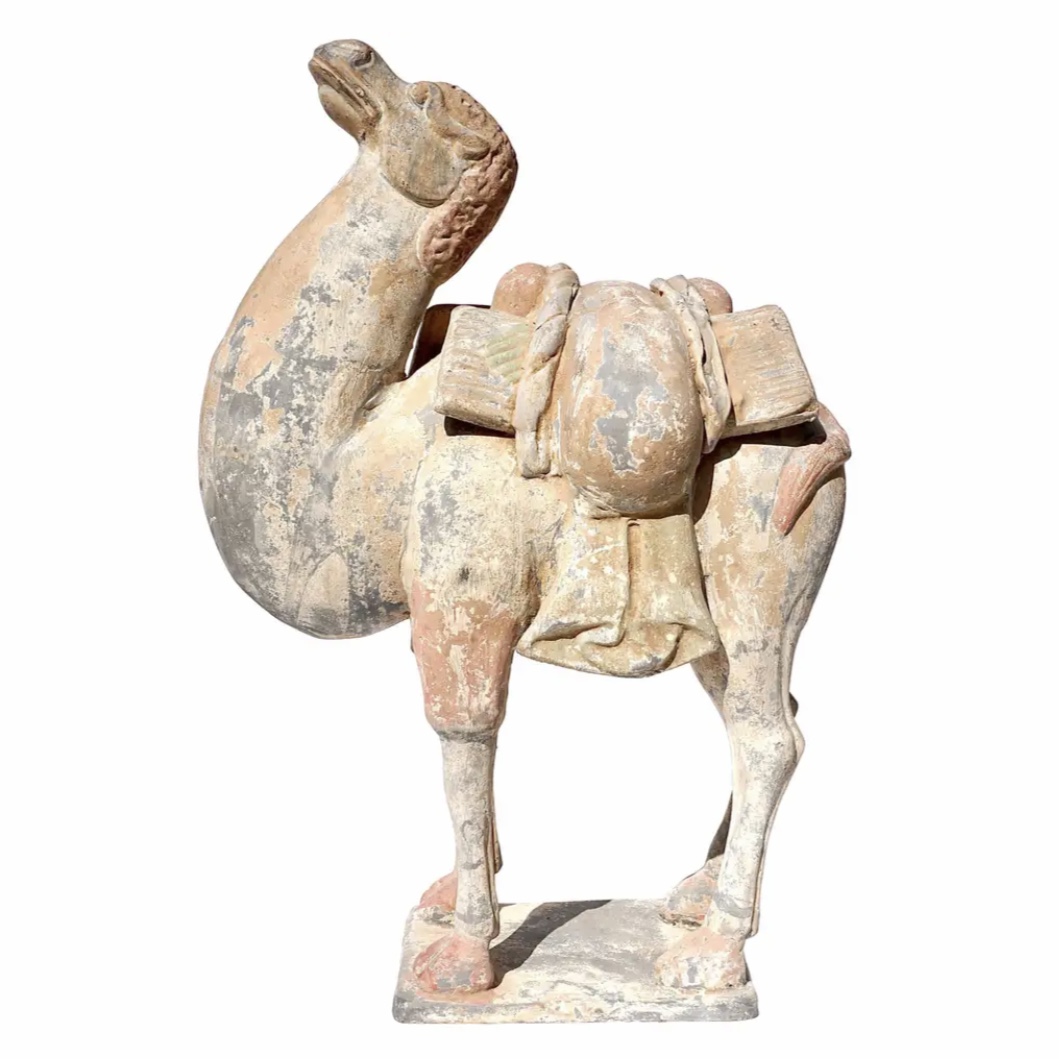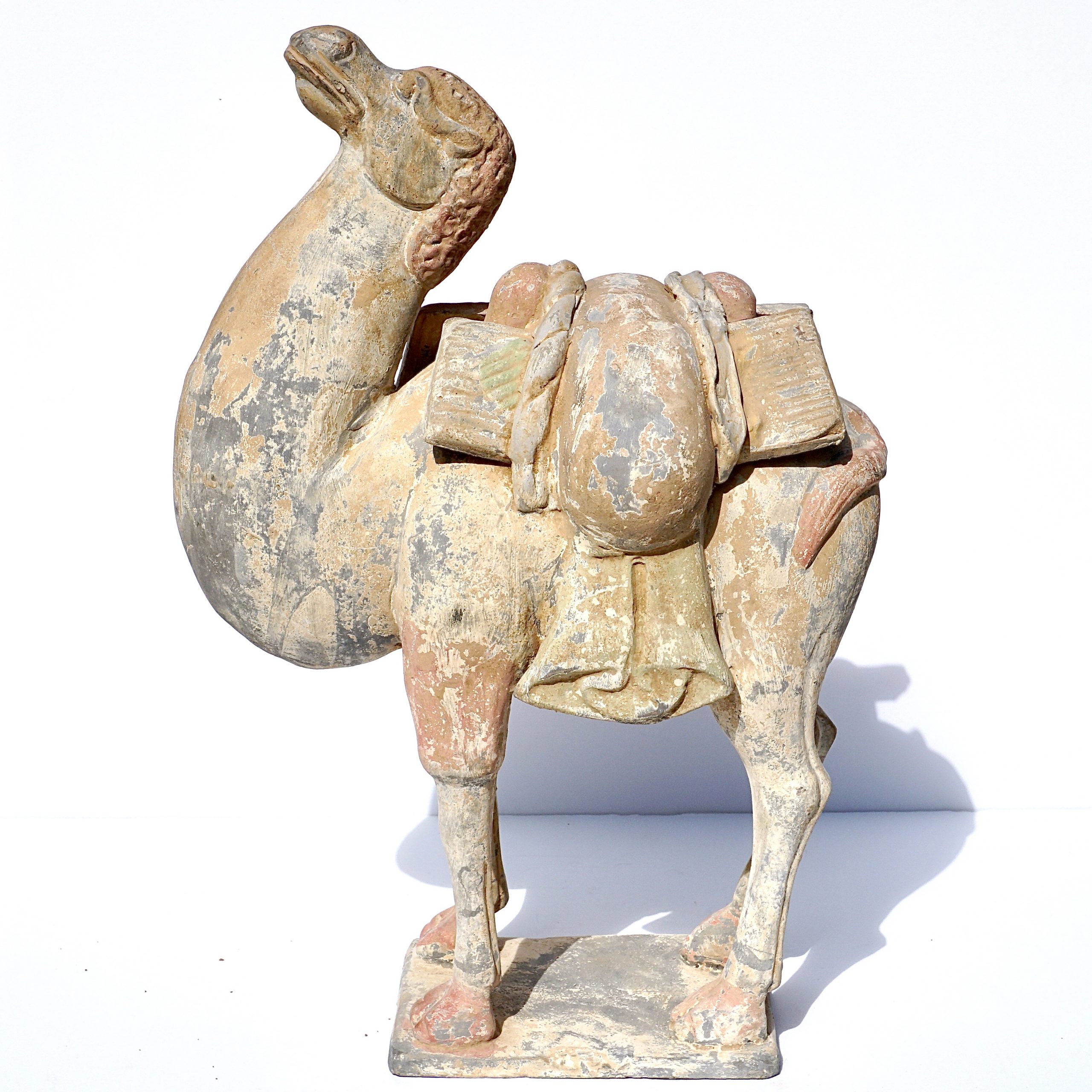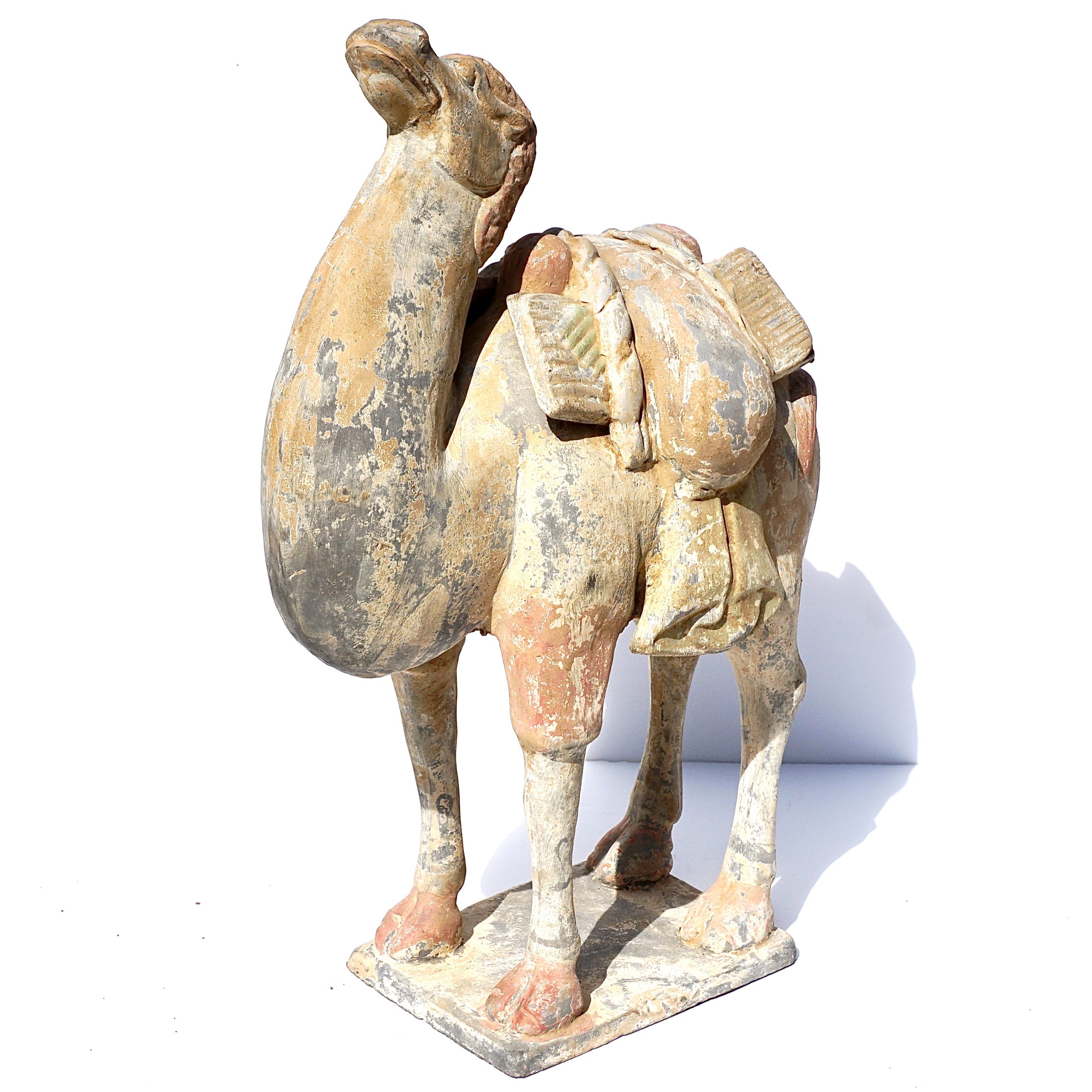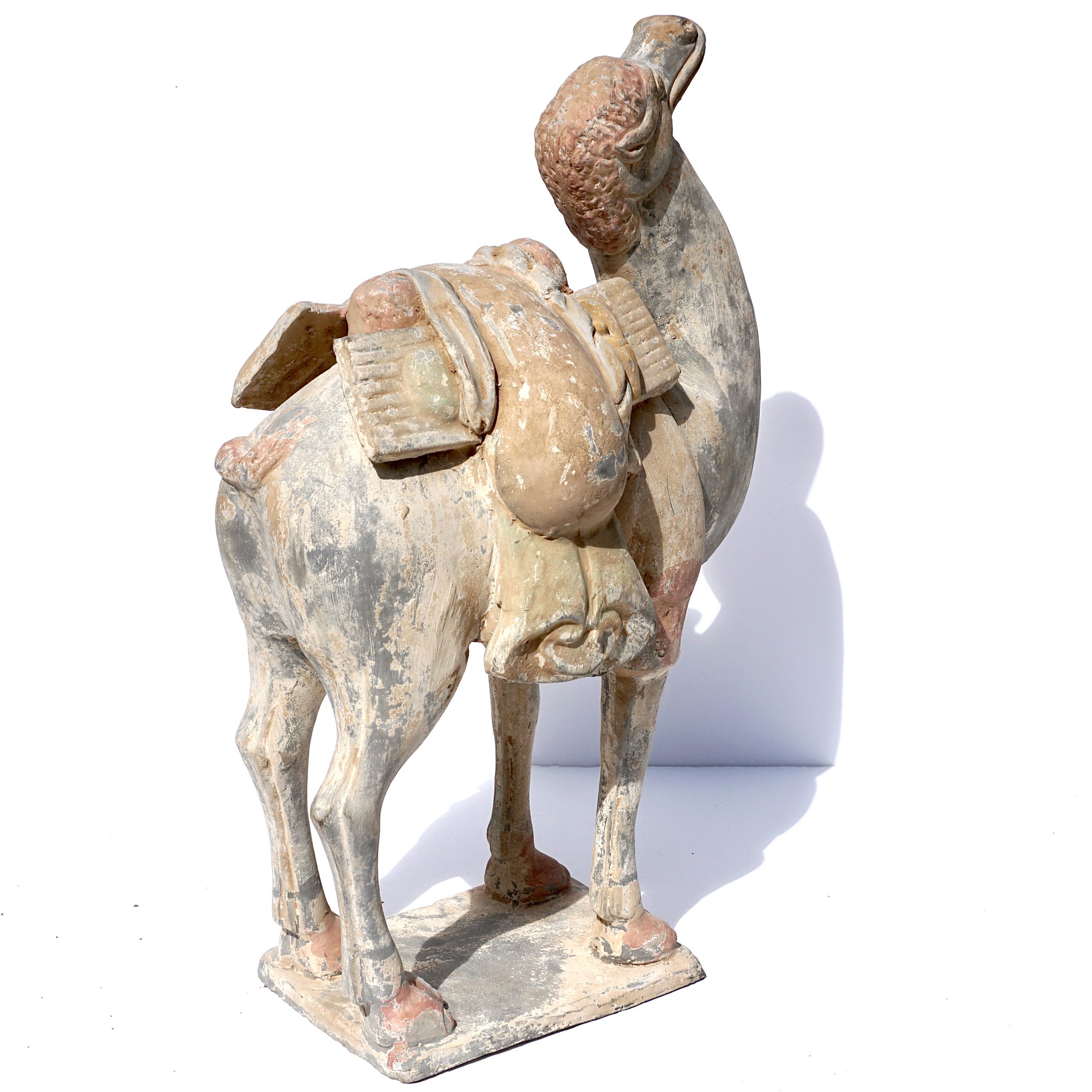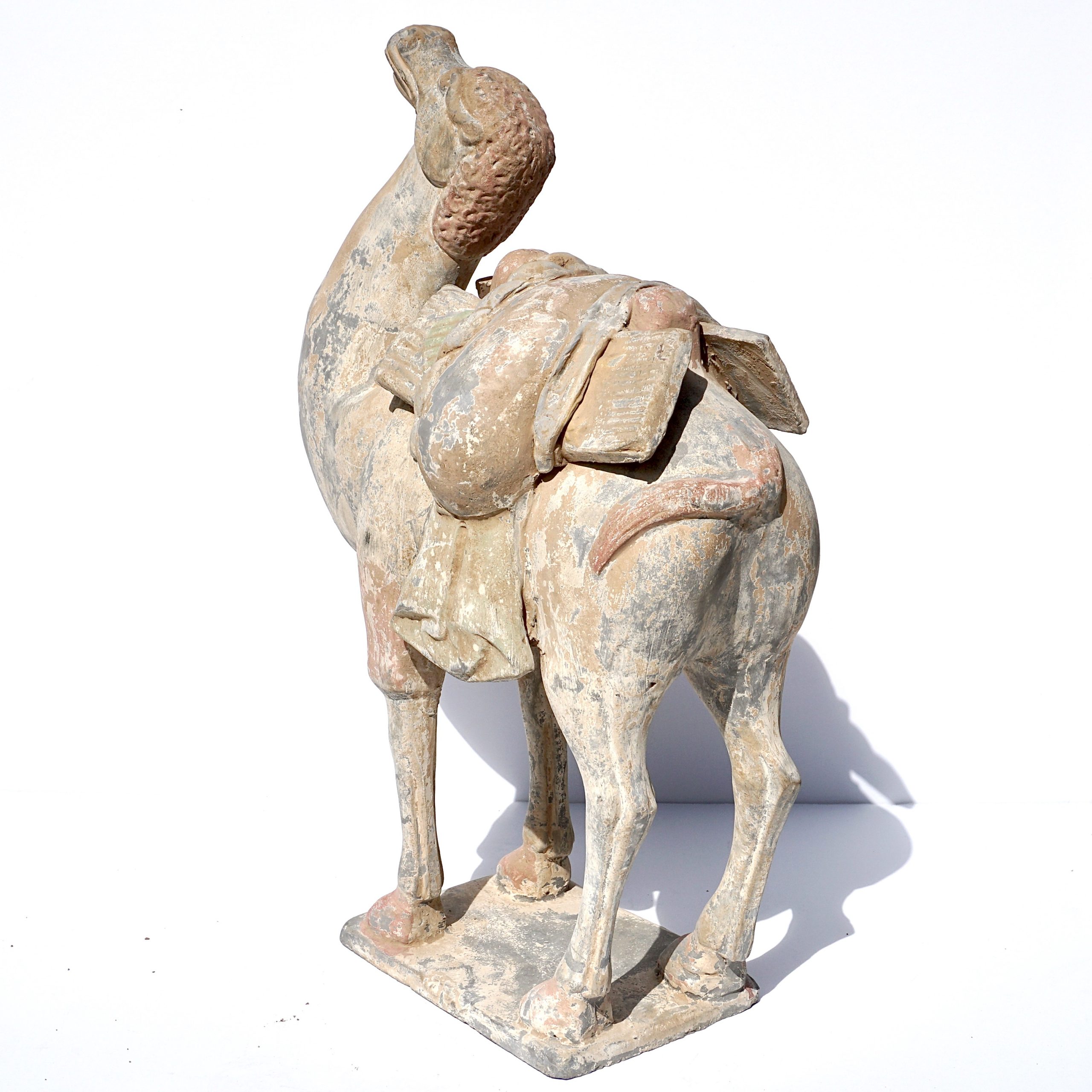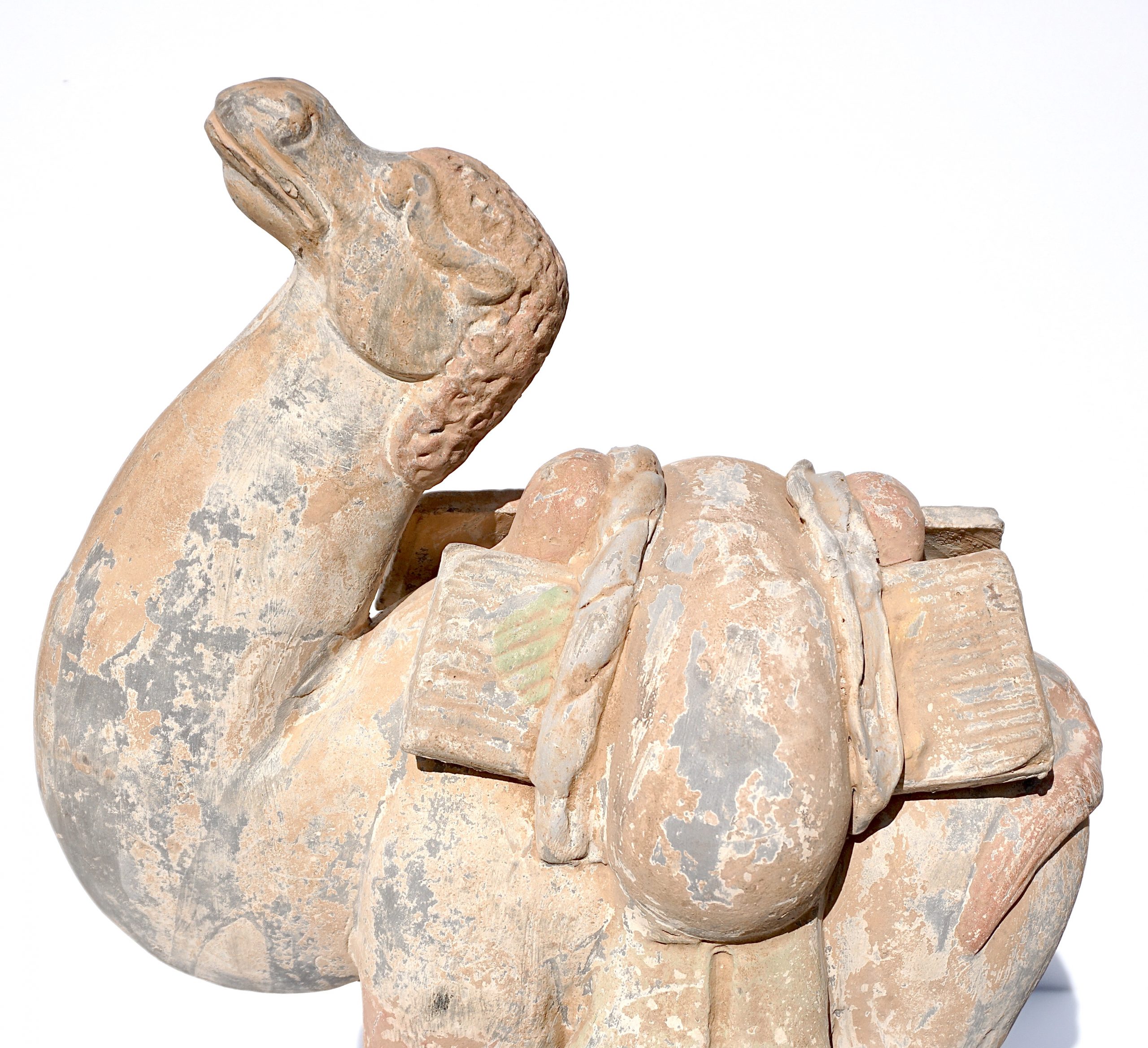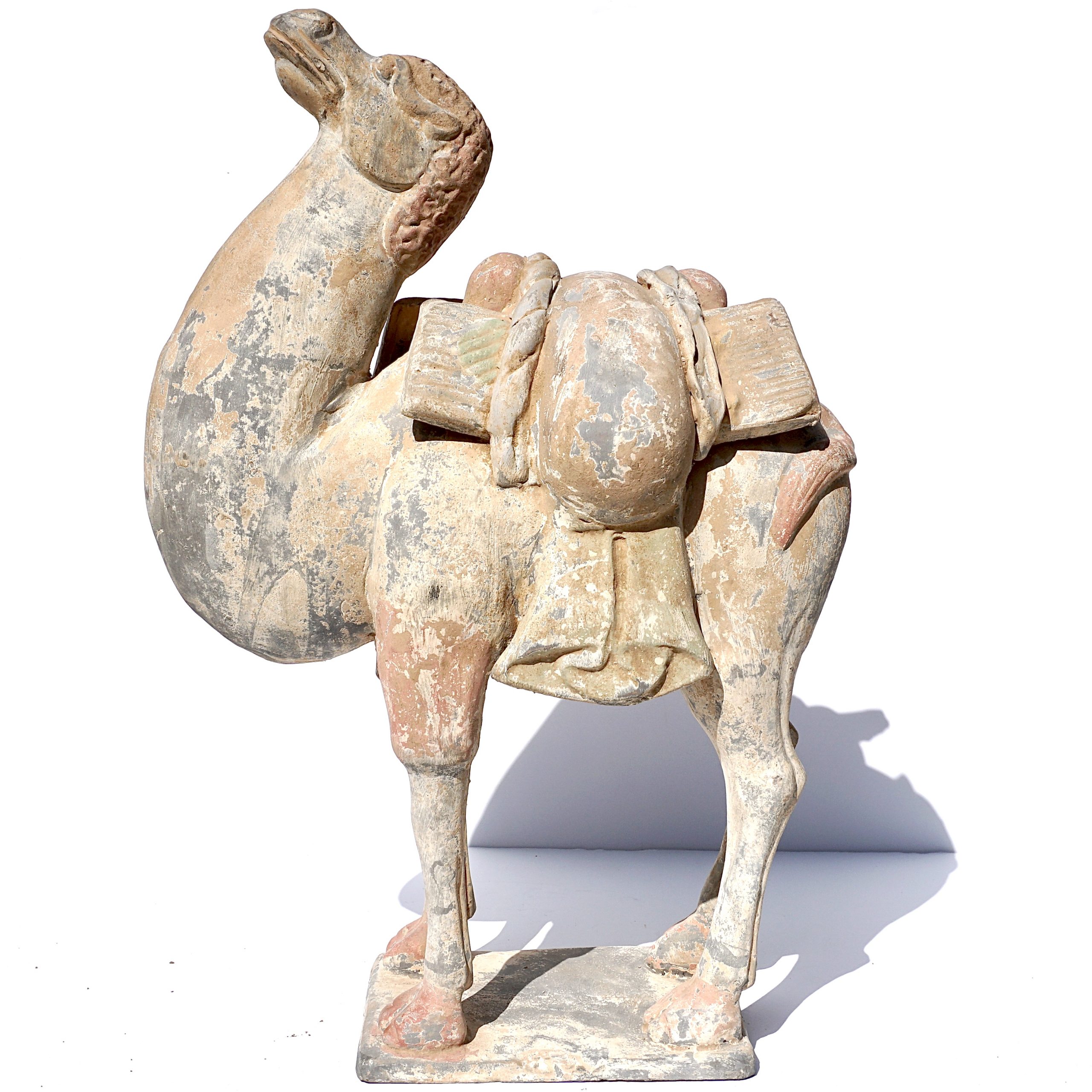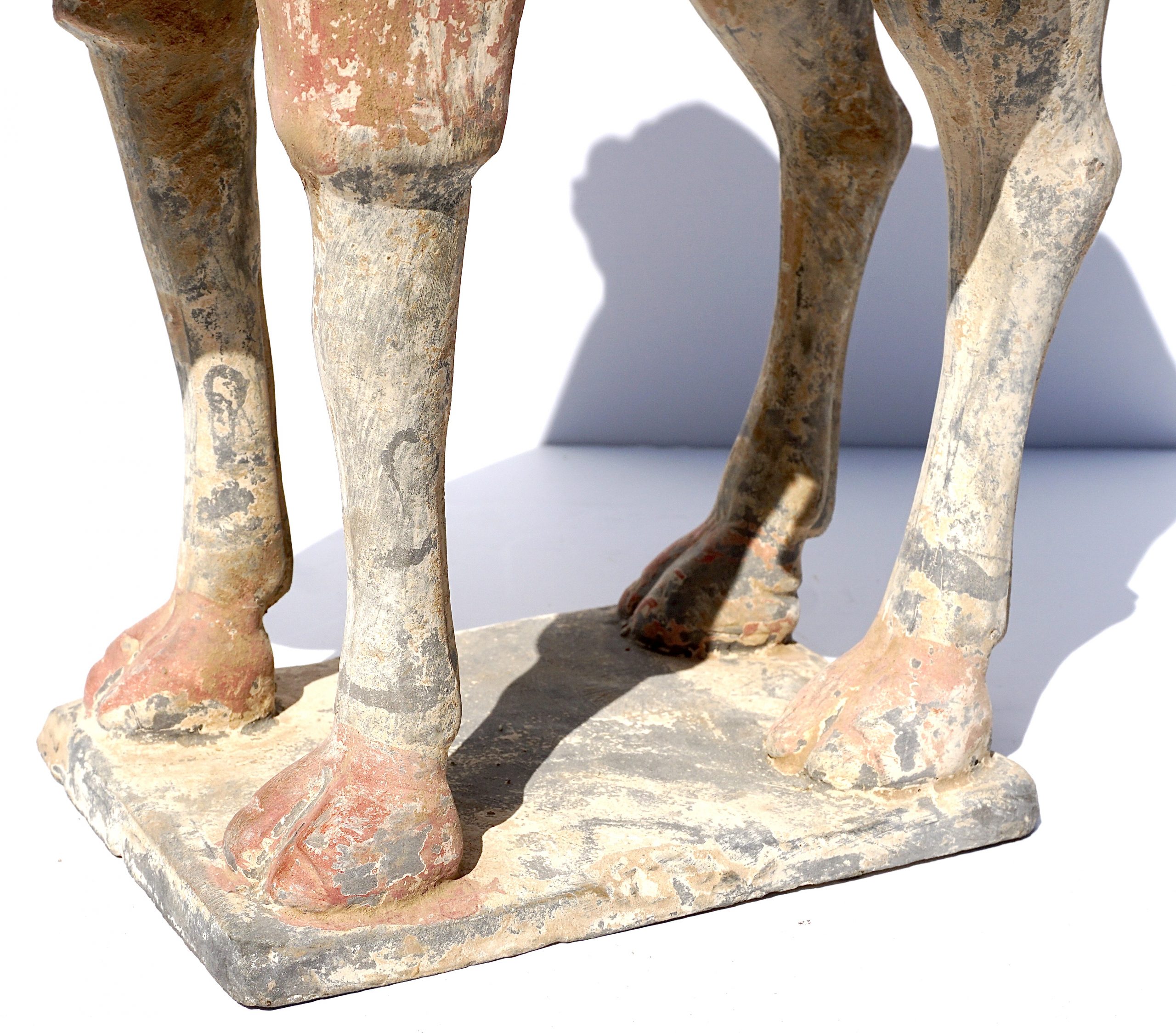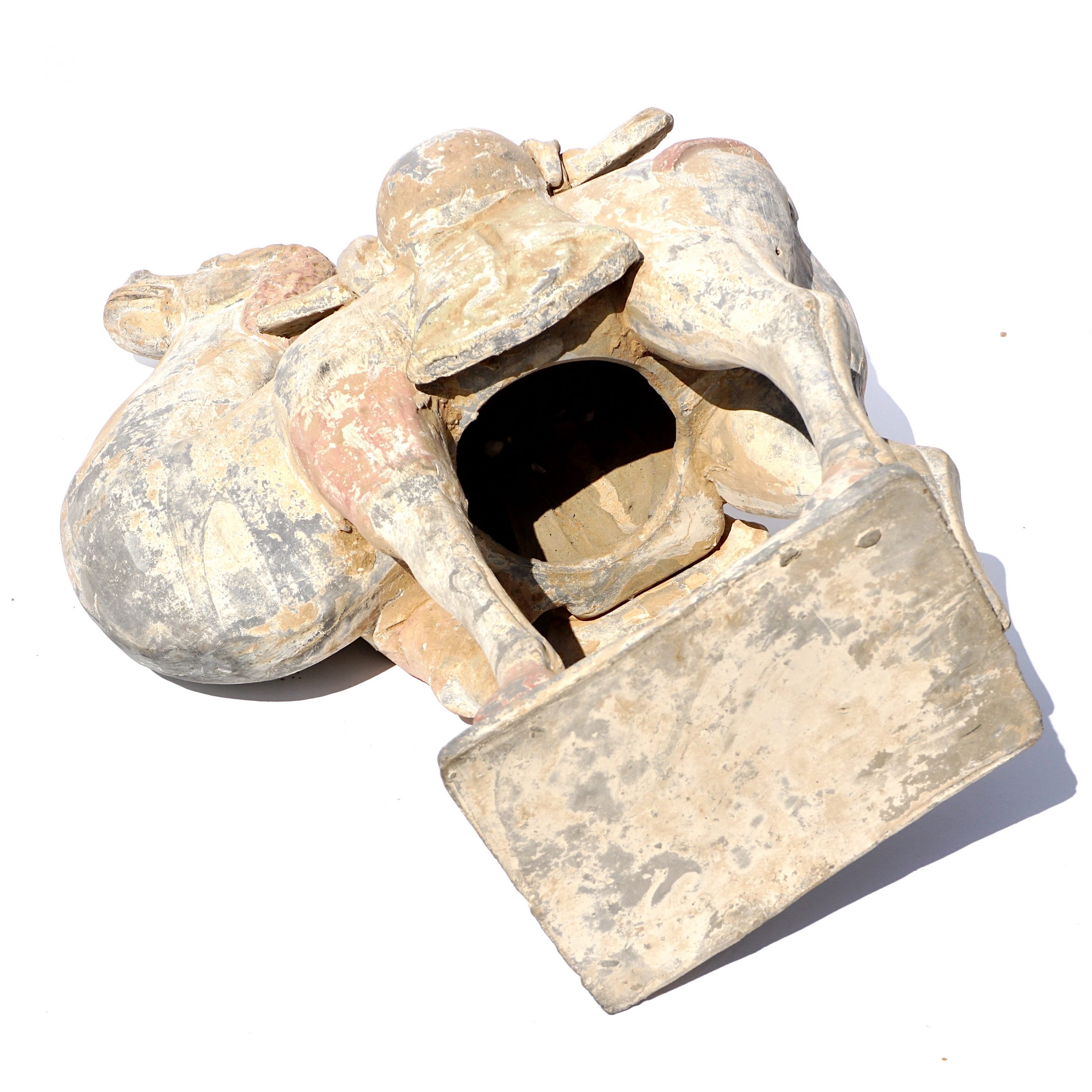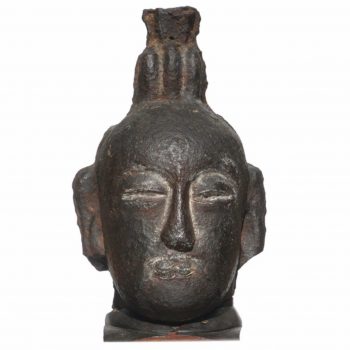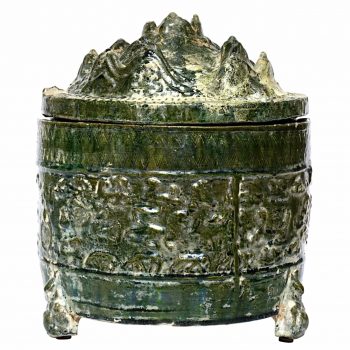Description
East Asia, China, Tang Dynasty, circa 618-907 CE.
A charming, hollow terracotta pottery figure of a Bactrian camel wearing distinctive formal painted saddle bags. This camel was made to be a tomb figure, known as mingqi. Tang dynasty elites had underground tombs full of pottery figures designed to care for their every need in the afterlife. This figure was painted (rather than glazed, as others were), with red, orange, brown and green paint still visible around the saddle and a great deal of cream and red paint visible, especially on the body and hoofs. He stands on his own, his four legs attached to the integrated flat platform. The camel’s head is curved back, his head up and mouth closed.
Measures: Height 18 inches (45.7 cm) Width 12.5 inches (31.75 cm) Depth 7.5 inches (19 cm)
Condition: Excellent with possible but no detected restoration.
The art of the Tang Dynasty was international, reflecting a world in which the Chinese court spread its influence through military conquest and trade to Central Asia, India, Persia, Africa, and southeastern Asia. In this prosperous period, Tang elites imitated the style of the Persians, wearing high boots, short tunics, and leopard skin hats. Music, sport, and dance all emulated Central Asian styles. Nothing is more representative of this cultural milieu than the figure of the Bactrian camel who, with his saddle bags, carried so many of these goods and, by extension, practices east and west along the Silk Road. Traveling west from the Tang capital, Chang’an, the Silk Road passed through the Taklamakan Desert. The Bactrian camel was vital to this transport because of its abilities, to go without water for a week, to travel 30 miles a day, and to carry hundreds of pounds, as well as to withstand very hot and very cold temperatures.


